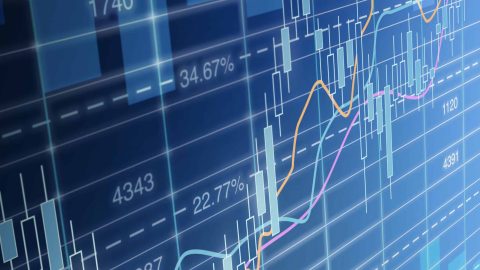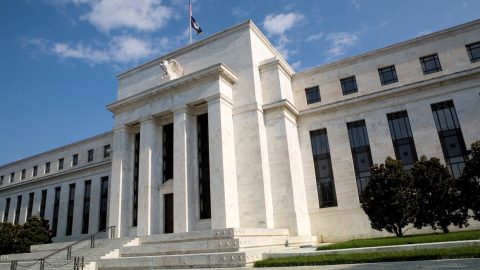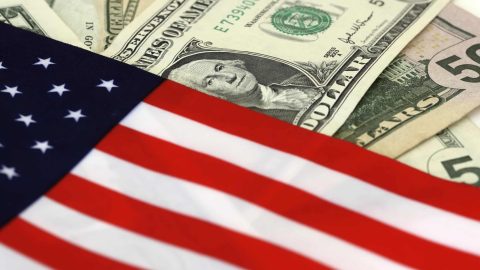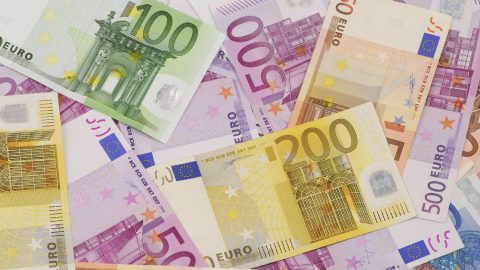Articles about “ECB”
ECB takes another tiny step
Economic growth in the Eurozone has embarked on a clear upward trend. At the same time, the fear of falling wages and prices has disappeared for now. The worries over a possible break-up of the European Union have also eased. Against this backdrop, the ECB President Draghi issued a slightly more optimistic growth forecast yet again on 27 April at the press conference of the European Central Bank. This is another tiny step indicating a possible reduction of the monetary support in the medium term.
Higher growth vs. increased political uncertainty
The first weeks of the new year have already picked up from where the trends that started in 2016 and the hypotheses for 2017 left off: higher growth, normalisation of inflation, increased uncertainty with regard to the effects of Trumponomics, and a gradual end of the loose monetary policy.
Emerging markets bonds in demand
Economic growth in the emerging markets has picked up substantially, while that in the industrialised economies has been rather stable. This has led to an increase in the growth differential in the emerging markets’ favour. Investor demand for emerging markets bonds has been on the rise in search of higher yields and interest rates.
Bond markets suffering from decline in liquidity
Author: Martina Groll, Senior Fund Manager The bond purchase programme of the European Central Bank has caused a drought on the bond markets. As a result, investors now have to take into account the liquidity risk on top of the interest rate risk and the default risk.
Expansive central bank: The Only Game in Town
The Council of the European Central Bank (ECB) further loosened its monetary policy on 10 March 2016. In view of the decline of the leading economic indicators and the excessively low inflation in the Eurozone, the bundle of measures introduced by the ECB is necessary. But, to paraphrase Mohamed El-Erian, the expansive central bank policy […]
Mario Draghi – Deflation Fighter
The arguments supporting a further rise in share prices have become stronger. The important central banks have been sending expansive signals in recent weeks, i.e. signals that support the economy and the markets. The latest measure was the statement made by the president of the European Central Bank (ECB), Mario Draghi, at the ECB press […]
The return of volatility
Earlier this year the president of the ECB said we would have to get used to elevated levels of volatility. And it is true, the market environment has changed. The years 2009 to 2014 were subject to an asset price reflation regime. High rates of return were coupled with low volatility. This relationship has now […]
Turning more positive on CEE equities
In searching for a perfect example of a sideways market one does not need to look further than at Central and Eastern European (CEE) equity markets. The CECE Composite, a Euro-based index of 23 Polish, Czech and Hungarian blue-chips (Bloomberg: CECEEUR), has been range bound for nearly four years, rarely trading outside a narrow range […]
Changes in the market regime
The big trends of the past weeks such as the appreciation of the US dollar, the weakening oil price, falling yields, and the outperformance of Eurozone equities have reversed in the past days and weeks, in some cases drastically so. What is behind all of this? When both demand (i.e. economic growth) and supply (i.e. […]
Corporate bonds with short maturities
Bond investors are faced with a difficult environment. Do corporate bonds offer the chance of a halfway decent yield? Stampfl: The statement that bond investors are faced with a difficult environment is actually an erroneous one. A balanced portfolio consisting of bonds from the peripheral countries and the core countries across all sectors would have […]
Macro data: Dynamics down
The dynamics of the economy and the markets have declined. Global economic growth is down on a quarter-on-quarter basis, the two most important trends of the past months (appreciation of the US dollar and falling oil price) have come to a halt, inflation is not falling anymore, and the US Fed has put a damper […]
Fed funds rate – a threat to the equity markets?
The US central bank, the Fed, is very likely – almost 90%, according to Fed funds futures – to raise the Fed funds rate this year. The expected rate hike has been one of the dominating topics on the financial markets for a year. The bursting of a mega bubble, rising pressure on fragile emerging […]
The confrontation of the doves
The most important central bank in the world, i.e. the US Fed, made an announcement yesterday that attracted a large deal of attention from investors. The bank withdrew its assurance to remain “patient” before the Fed funds rate would be increased. This paved the way for a possible abandonment of the zero interest rate policy, […]
Two canaries in the coalmine
The US dollar has appreciated significantly vis-à-vis the euro in the past months. For this trend to continue, at least two developments would have to be in place. Firstly, the US Fed would have to abandon its zero interest rate policy; and secondly, the ECB would have to remain on its path of negative interest […]
Boon and bane
The driving topics on the financial markets are the stabilisation of the oil price, mixed economic indicators globally vs. positive economic indicators for the Eurozone, the temporary decline in escalation risk, and the expansive central bank policies.
The effects of the ECB policy
Since the cutting of key-lending rates to almost zero in the Eurozone did not suffice to keep the inflation expectations at their long-term target of slightly below 2%, the ECB Council decided in January to expand the central bank money supply until the accomplishment of the target was foreseeable. The possible effect on the financial […]















